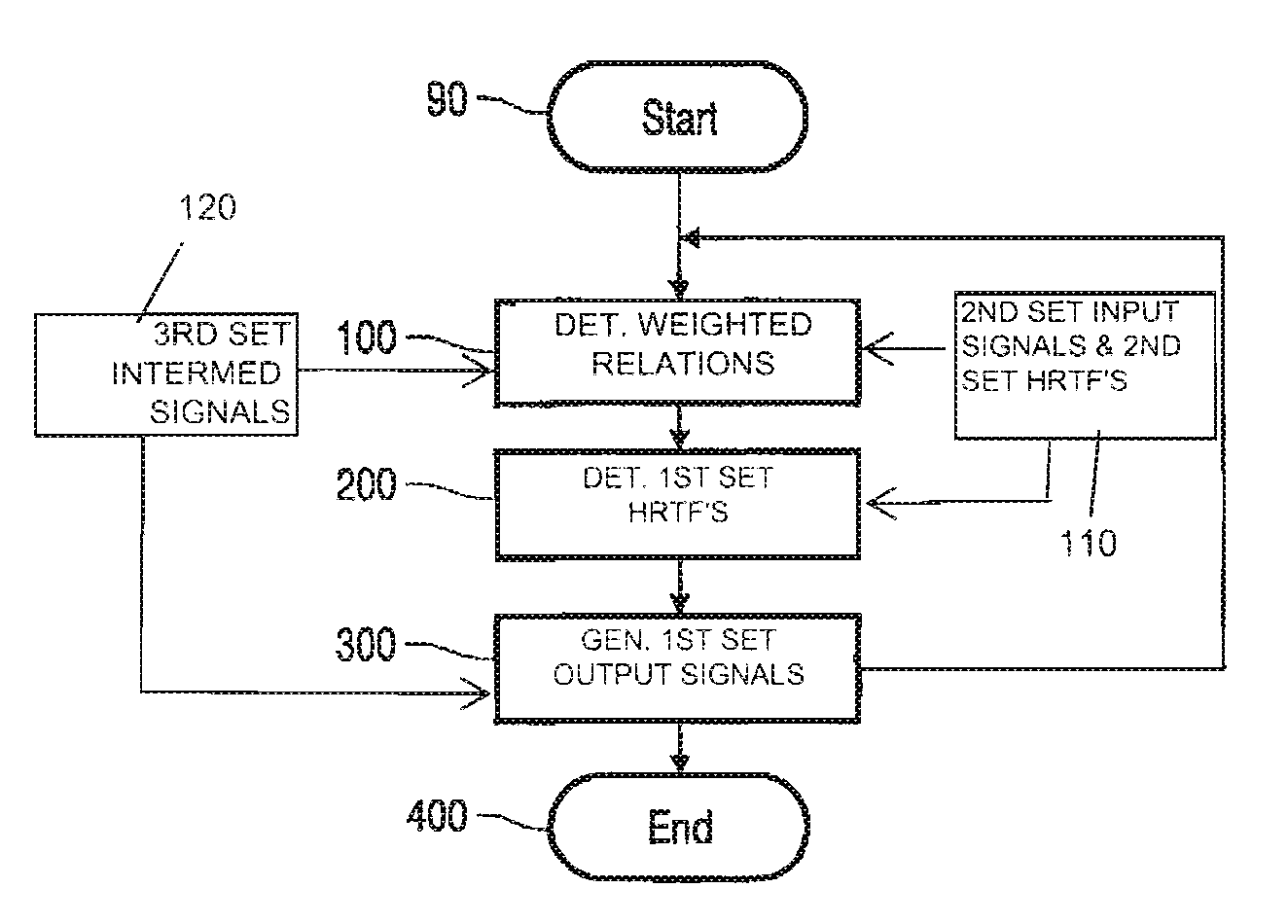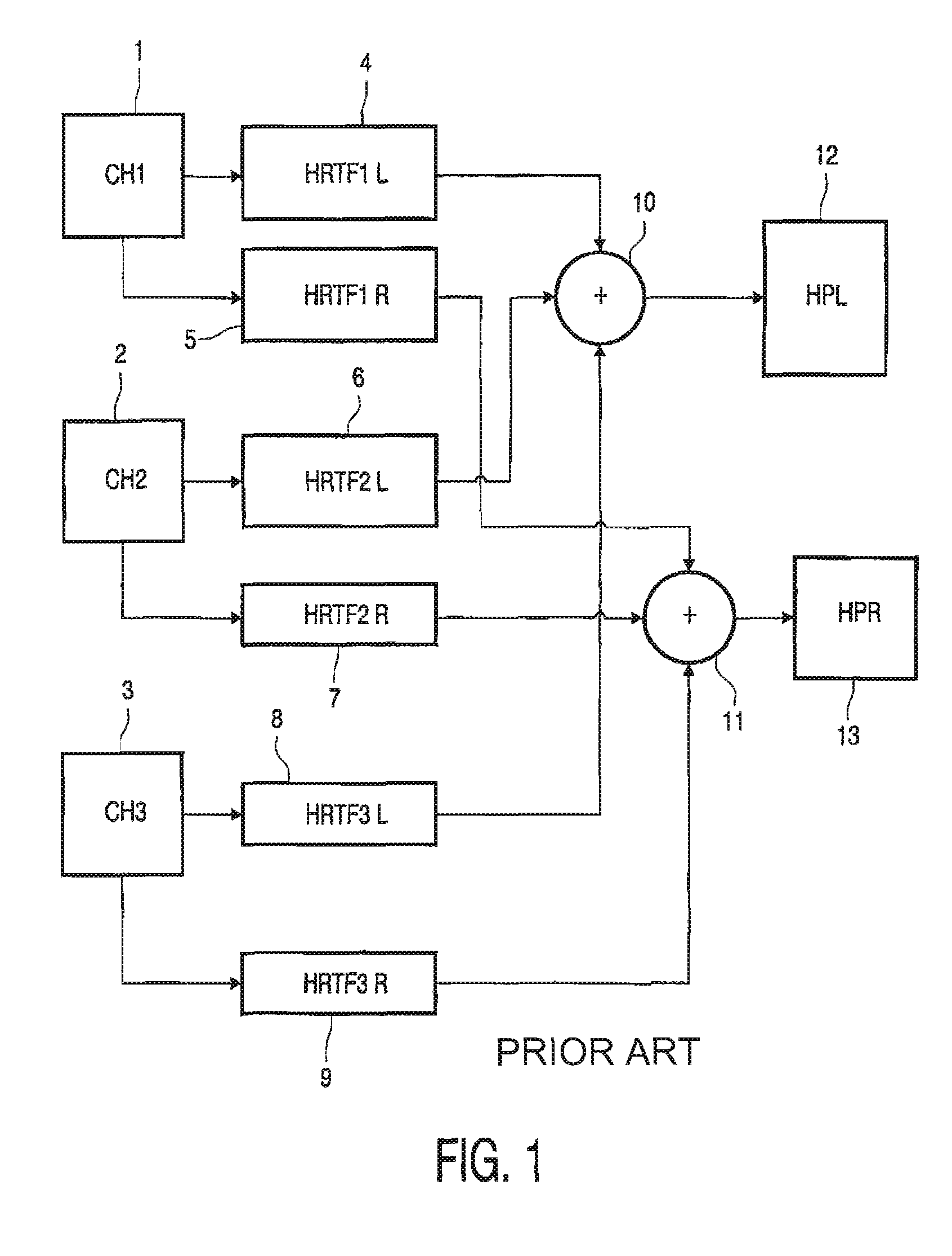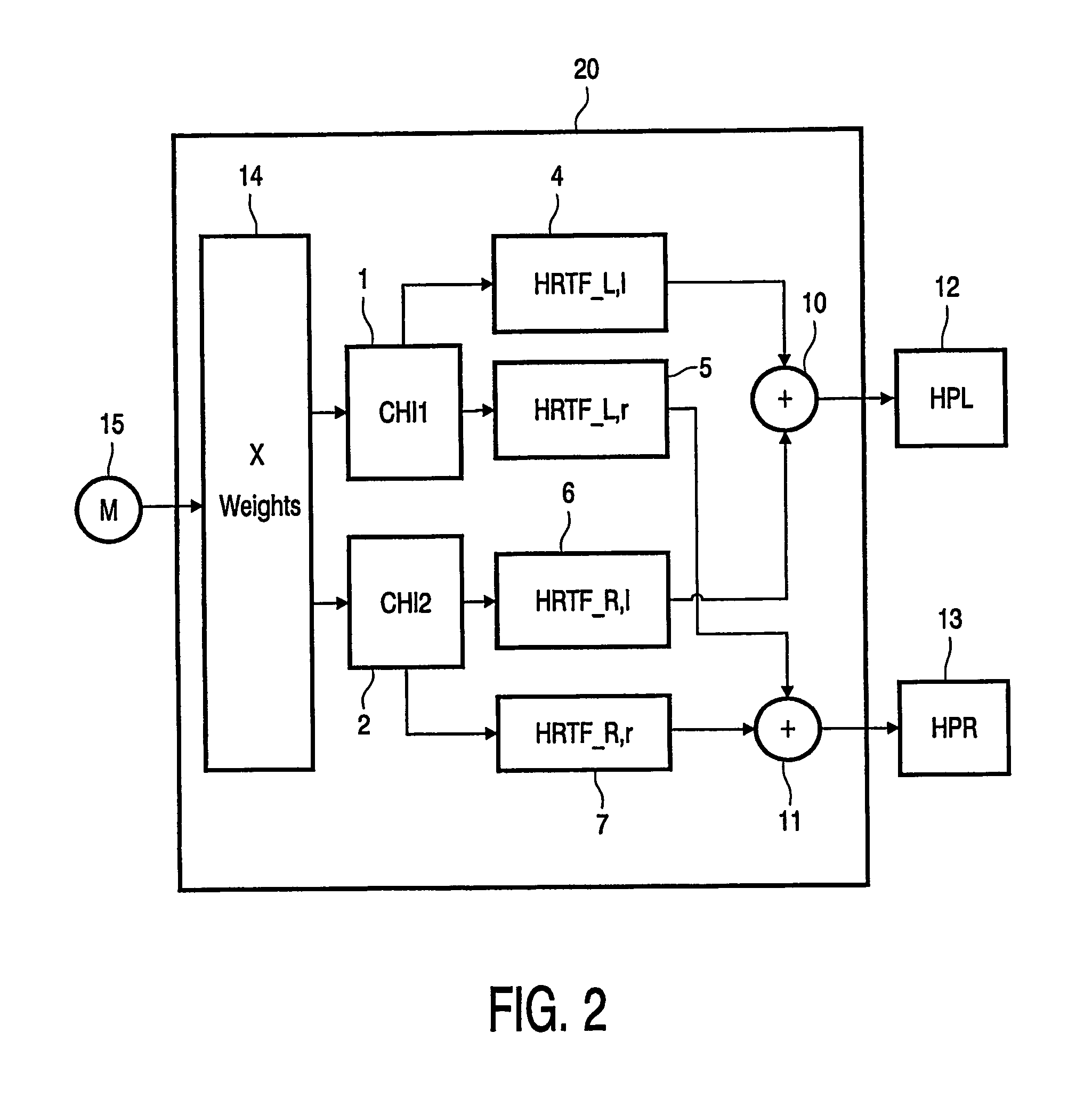Generation of a sound signal
a sound signal and generation technology, applied in the direction of stereophonic arrangments, pseudo-stereo systems, electrical equipment, etc., can solve the problems of complex design, high cost, and unnecessary convolution of system implementations of said hrtfs
- Summary
- Abstract
- Description
- Claims
- Application Information
AI Technical Summary
Benefits of technology
Problems solved by technology
Method used
Image
Examples
first embodiment
[0046]Continuing the prior art example of FIG. 1, but implemented in a preferred first embodiment of the invention according to the following:
CH1=α1·L+β1·R (4)
CH2=α2·L+β2·R (5)
CH3=α3·L+β3·R (6)
[0047]It is found that formula (1) and (2) may still be applied for the summation (of products of channels and related HRTFs), thus when (4) (5) and (6) are inserted in (1) and (2), it gives:
HPL=(α1·L+β1·R)·HRTF1,L+(α2·L+β2·R)·HRTF2,L+(α3·L+β3·R)·HRTF3,L (7)
HPR=(α1·L+β1·R)·HRTF1,R+(α2·L+β2·R)·HRTF2,R+(α3·L+β3·R)·HRTF3,R (8)
[0048]Or expressed differently:
HPL=L·(α1·HRTF1,L+α2·HRTF2,L+α3·HRTF3,L)+R·(β1·HRTF1,L+β2·HRTF2,L+β3·HRTF3,L); (9)
[0049]Accordingly,
HPR=L·(α1·HRTF1,R+α2·HRTF2,R+α3·HRTF3,R)+R·(β1·HRTF1,R+β2·HRTF2,R+β3·HRTF3,R). (10)
[0050]However, note—the HRTFs discussed so far in respect of the invention—are merely used as intermediate variables in the formulas—and are not and need not as opposed to the discussion relating to said prior art, be implemented as real Head Related Transfer F
second embodiment
[0059]FIG. 2 shows the generation of two output sound signals from one input sound signal. Said two sound signals may in a typical use again comprise a stereophonic signal distributed to two speakers in a headphone, however in this example—as the invention—only one source, M of an input sound signal is discussed.
[0060]Firstly, the prior art will be discussed with a calculation of HRTF's used:
[0061]The prior art is applied for only one input channel (as in this figure), i.e., an input sound source M and then distributed to two resulting (output) sound signals HPL, HPR. Compared to and according to FIG. 1, in principle one channel (i.e., CH3) less is used; correspondingly, the summation for the left resulting (output) sound signal in the prior art is:
HPL=CH1·HRTF—L,l+CH2·HRTF—R,l (13)
[0062]And, correspondingly, summation for the right resulting (output) sound signal will then be:
HPR=CH1·HRTF—L,r+CH2·HRTF_R,r (14)
[0063]Here the first uppercase notation is each of the loudspeaker channel
PUM
 Login to view more
Login to view more Abstract
Description
Claims
Application Information
 Login to view more
Login to view more - R&D Engineer
- R&D Manager
- IP Professional
- Industry Leading Data Capabilities
- Powerful AI technology
- Patent DNA Extraction
Browse by: Latest US Patents, China's latest patents, Technical Efficacy Thesaurus, Application Domain, Technology Topic.
© 2024 PatSnap. All rights reserved.Legal|Privacy policy|Modern Slavery Act Transparency Statement|Sitemap



